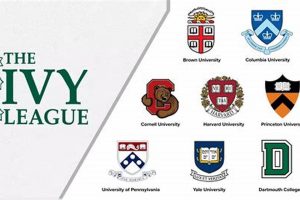Financing vocational training presents unique challenges. Unlike traditional four-year colleges, trade schools often have shorter programs and specific equipment needs. Securing appropriate funding can be essential for students pursuing careers in skilled trades, enabling them to cover tuition, tools, and living expenses while focusing on their education. Selecting optimal funding solutions involves careful consideration of interest rates, repayment terms, and eligibility requirements. For instance, a specialized loan program might offer deferred payments until after graduation, allowing students to enter the workforce and establish financial stability before beginning repayment.
Access to quality vocational education plays a vital role in a thriving economy. Skilled tradespeople are essential for critical infrastructure projects, technological advancements, and maintaining the backbone of various industries. Enabling individuals to pursue these careers through accessible financing contributes to workforce development and economic growth. Historically, accessing financial aid for vocational training has presented obstacles, often requiring students to rely on personal savings or high-interest loans. The emergence of tailored financing options specifically designed for trade schools represents a significant advancement, offering prospective students greater flexibility and opportunity.
This article will explore various financing avenues available to aspiring tradespeople, including federal student aid programs, private loan options, and scholarship opportunities. It will also delve into strategies for comparing loan offers, understanding repayment obligations, and managing educational debt responsibly.
Tips for Securing Optimal Trade School Financing
Navigating the landscape of financial aid for vocational training requires careful planning and informed decision-making. These tips offer guidance for prospective students seeking optimal funding solutions.
Tip 1: Explore Federal Student Aid Options: Federal programs often offer favorable interest rates and flexible repayment terms. Completing the Free Application for Federal Student Aid (FAFSA) is the first step in determining eligibility.
Tip 2: Research Specialized Trade School Loan Programs: Some lenders offer loans specifically designed for vocational training, potentially covering tuition, tools, and other program-related expenses.
Tip 3: Compare Loan Terms and Interest Rates: Carefully evaluate interest rates, fees, and repayment options from multiple lenders to identify the most cost-effective solution.
Tip 4: Consider Scholarship Opportunities: Numerous organizations offer scholarships specifically for students pursuing skilled trades. Thorough research can uncover valuable funding sources.
Tip 5: Develop a Realistic Budget: Creating a comprehensive budget that includes tuition, living expenses, and tool costs is essential for responsible financial planning.
Tip 6: Factor in Potential Earning Potential: Researching typical salaries in the chosen trade can help assess the long-term financial implications of educational debt.
Tip 7: Seek Guidance from Financial Aid Advisors: Many trade schools offer financial aid counseling services to assist students in navigating the complexities of funding their education.
By following these guidelines, prospective students can effectively navigate the financing process and secure the resources needed to pursue rewarding careers in skilled trades. These strategies empower individuals to make informed decisions and manage their educational investments wisely.
The following section will provide a detailed overview of various loan options, repayment strategies, and resources available to aspiring tradespeople.
1. Interest Rates
Interest rates represent a critical factor in determining the overall cost of a student loan and significantly influence the affordability of repayment. For students pursuing vocational training at trade schools, understanding the nuances of interest rates is essential for making informed borrowing decisions and minimizing long-term debt burdens. Varying loan programs and lender types offer different interest rate structures, impacting the total amount repaid over the life of the loan.
- Fixed vs. Variable Interest Rates
Fixed interest rates remain constant throughout the loan repayment period, providing predictability and stability. Variable interest rates fluctuate based on market conditions, potentially leading to lower initial payments but also carrying the risk of increases over time. Choosing between fixed and variable rates requires careful consideration of individual risk tolerance and financial projections.
- Impact of Loan Term Length
The length of the loan repayment term also affects the total interest paid. Shorter loan terms typically carry higher monthly payments but result in less overall interest paid. Longer loan terms reduce monthly payments but increase the total interest accrued over time. Balancing monthly affordability with long-term cost considerations is crucial for responsible borrowing.
- Federal vs. Private Loan Interest Rates
Federal student loans often offer more favorable interest rates and repayment options compared to private loans. Federal loan rates are typically fixed and may be subsidized, meaning the government covers interest accrual while the student is in school. Private loan rates can be fixed or variable and are often influenced by credit scores and market conditions.
- Interest Rate Discounts and Rebates
Some lenders offer interest rate discounts for borrowers who meet specific criteria, such as enrolling in autopay or maintaining a certain GPA. These discounts can reduce the overall cost of borrowing and should be factored into loan comparisons.
By carefully evaluating these facets of interest rates, prospective trade school students can make informed decisions that align with their individual financial circumstances. Understanding the interplay between interest rates, loan terms, and lender types empowers borrowers to minimize long-term debt and successfully manage their educational investments.
2. Repayment Terms
Repayment terms represent a crucial aspect of selecting optimal financing for vocational training. Understanding the nuances of various repayment options empowers prospective trade school students to make informed decisions, manage debt responsibly, and align loan terms with their projected career paths. Different loan programs offer varying repayment structures, influencing both short-term affordability and long-term financial well-being.
- Standard Repayment Plans
Standard repayment plans typically involve fixed monthly payments over a set period, often 10 years. While these plans offer predictability, they may result in higher monthly payments compared to other options. For graduates entering high-demand trades with strong earning potential, standard repayment plans can facilitate quicker debt reduction.
- Graduated Repayment Plans
Graduated repayment plans offer lower initial monthly payments that gradually increase over time. This structure can be advantageous for graduates anticipating salary growth early in their careers. However, the total interest paid over the life of the loan may be higher compared to standard repayment plans.
- Income-Driven Repayment Plans
Income-driven repayment plans tie monthly payments to a borrower’s income and family size. These plans offer flexibility for graduates entering fields with potentially variable income streams. However, extending the repayment period through income-driven plans often results in accruing more interest over time.
- Deferment and Forbearance Options
Deferment and forbearance options allow borrowers to temporarily postpone or reduce loan payments under specific circumstances, such as unemployment or economic hardship. Understanding these options provides a safety net for graduates facing unforeseen financial challenges. However, interest may continue to accrue during periods of deferment or forbearance, increasing the overall loan balance.
Careful consideration of repayment terms is essential for selecting a loan that aligns with individual financial circumstances and career goals. Evaluating factors such as projected income, desired repayment timeline, and potential need for flexibility allows prospective trade school students to make informed decisions and effectively manage their educational debt. Choosing the right repayment plan can significantly impact long-term financial stability and contribute to a successful transition into the chosen skilled trade.
3. Loan Amounts
Loan amounts play a critical role in determining the suitability of financing options for vocational training. The “best” loan considers the total cost of attendance, encompassing tuition, fees, tools, equipment, and living expenses. Insufficient coverage can create financial strain, hindering a student’s ability to focus on their education. For example, a student pursuing welding might require specialized equipment not covered by tuition. A loan falling short of the total cost could force them to compromise on quality or incur additional debt through separate financing, potentially at less favorable terms. Conversely, borrowing more than necessary increases the overall debt burden and long-term repayment obligations.
Determining appropriate loan amounts requires careful budgeting and comprehensive research into program-specific costs. Trade schools often provide detailed cost breakdowns, including tuition, fees, and estimated expenses for tools and supplies. Students should also factor in living expenses, transportation, and other personal costs. Accurately assessing these factors allows for informed borrowing decisions, minimizing unnecessary debt while ensuring sufficient resources to complete the program successfully. For instance, attending a trade school in a higher cost-of-living area might necessitate a larger loan amount compared to a similar program in a more affordable region. Understanding these regional variations is crucial for securing adequate funding.
Finding the optimal loan amount requires balancing educational needs with responsible borrowing practices. Securing sufficient funds is essential for program completion and success in the chosen trade. However, excessive borrowing can create long-term financial challenges. Carefully evaluating program costs, creating a realistic budget, and exploring various funding options, including scholarships and grants, helps students determine the appropriate loan amount, minimizing debt while maximizing educational opportunities. This balanced approach is crucial for long-term financial well-being and career success.
4. Eligibility Criteria
Eligibility criteria represent a critical factor in determining access to various student loan options for vocational training. These criteria, often specific to each loan program, influence which financing avenues are available to prospective trade school students. Understanding these requirements is essential for navigating the financial aid landscape and securing optimal funding solutions. Eligibility criteria can include factors such as citizenship status, credit history, enrollment status in an eligible program, and income level. For instance, federal student loans typically require U.S. citizenship or eligible noncitizen status, while private loans may consider credit scores and debt-to-income ratios. These factors directly impact loan accessibility and the types of loans for which individuals qualify.
The connection between eligibility criteria and selecting the “best” loan involves careful assessment of individual circumstances and matching those circumstances with available loan programs. For example, a student with limited credit history might find federal student loans more accessible than private loans, as federal loans often have less stringent credit requirements. Conversely, a student with a strong credit history might qualify for private loans with lower interest rates. Understanding these nuances allows prospective students to strategically target loan programs that align with their specific eligibility profile, maximizing access to favorable terms and minimizing potential obstacles.
Navigating eligibility criteria effectively requires thorough research and proactive engagement with potential lenders. Carefully reviewing the specific requirements of each loan program allows students to identify suitable options and gather the necessary documentation. Consulting with financial aid advisors at the chosen trade school can provide personalized guidance and support throughout the application process. This proactive approach streamlines the financial aid process and increases the likelihood of securing the best possible loan terms, contributing to a successful educational journey and a smooth transition into a skilled trade career.
5. Lender Reputation
Lender reputation plays a crucial role in securing optimal financing for vocational training. A lender’s track record, customer service, and ethical practices significantly influence the borrower’s experience and long-term financial well-being. Selecting a reputable lender contributes to a smoother borrowing process, transparent communication, and access to resources that support responsible debt management. Evaluating lender reputation involves considering factors such as industry standing, customer reviews, and regulatory compliance. This careful assessment is essential for making informed decisions and mitigating potential risks associated with borrowing.
- Transparency and Disclosure
Reputable lenders prioritize transparent communication and clear disclosure of loan terms, fees, and repayment options. This transparency empowers borrowers to make informed decisions and avoid hidden costs or unexpected obligations. Lenders with a strong reputation provide comprehensive information upfront, enabling borrowers to compare loan offers effectively and choose the most suitable option. Conversely, lenders lacking transparency might obscure crucial details, potentially leading to misunderstandings and financial difficulties.
- Customer Service and Support
Responsive and accessible customer service is a hallmark of reputable lenders. Borrowers often require assistance navigating the complexities of loan applications, repayment options, and potential financial challenges. A lender’s commitment to providing prompt and helpful support contributes to a positive borrowing experience and fosters trust. Positive customer reviews and testimonials often reflect a lender’s dedication to client satisfaction.
- Ethical Lending Practices
Reputable lenders adhere to ethical lending practices, avoiding predatory tactics or misleading marketing strategies. They prioritize responsible borrowing and provide resources to help borrowers manage their debt effectively. Ethical lenders demonstrate a commitment to long-term financial well-being, fostering a positive relationship between borrower and lender.
- Industry Standing and Regulatory Compliance
A lender’s industry standing and regulatory compliance reflect their adherence to legal and ethical standards. Reputable lenders maintain strong financial stability and operate within established regulatory frameworks. This commitment to compliance provides borrowers with a sense of security and confidence in the lender’s reliability and long-term viability.
Choosing a lender with a strong reputation significantly contributes to a positive borrowing experience and responsible debt management. Thorough research, including reviewing customer feedback and verifying regulatory compliance, is essential for selecting a trustworthy lending partner. This careful evaluation empowers borrowers to secure favorable loan terms, access valuable resources, and build a strong foundation for long-term financial success in their chosen skilled trade.
Frequently Asked Questions
This section addresses common inquiries regarding financing options for vocational training.
Question 1: What types of financial aid are available for trade schools?
Several financing avenues exist, including federal student loans, private loans, scholarships, grants, and employer-sponsored programs. Each option presents specific eligibility requirements and terms.
Question 2: How does one determine eligibility for federal student aid?
Completing the Free Application for Federal Student Aid (FAFSA) determines eligibility for federal programs. The FAFSA assesses financial need and provides information regarding available grant and loan options.
Question 3: What distinguishes private loans from federal student loans?
Private loans originate from banks or credit unions, while federal loans come from the government. Federal loans typically offer more favorable interest rates and repayment terms, particularly for borrowers with limited credit history. Private loans may offer higher borrowing limits but often require stronger credit profiles.
Question 4: How can prospective students compare loan offers effectively?
Comparing interest rates, fees, repayment terms, and lender reputation across multiple loan options is essential. Utilizing online comparison tools and consulting with financial aid advisors can assist in making informed decisions.
Question 5: What strategies can help manage educational debt responsibly?
Creating a realistic budget, exploring income-driven repayment plans, and making consistent, on-time payments contribute to responsible debt management. Seeking guidance from financial aid counselors can provide personalized strategies.
Question 6: What resources are available to assist students in navigating the financial aid process?
Trade schools often provide financial aid offices that offer guidance on funding options, application procedures, and debt management strategies. Online resources and government websites also provide valuable information regarding financial aid for vocational training.
Careful consideration of these frequently asked questions empowers prospective trade school students to make informed decisions regarding financing their education and managing their financial obligations effectively.
For further assistance, please consult with a financial aid advisor or explore the resources provided by your chosen trade school.
Securing the Best Student Loans for Trade School
Navigating the financial aid landscape for vocational training requires diligent research and careful consideration. This exploration of optimal funding solutions for trade schools has highlighted the importance of understanding loan terms, interest rates, repayment options, and lender reputation. Federal student aid programs, specialized trade school loans, and scholarship opportunities represent potential avenues for financing a skilled trades education. Effective budgeting, realistic cost assessments, and responsible borrowing practices are crucial for long-term financial well-being. A thorough understanding of eligibility criteria and program-specific costs empowers prospective students to make informed decisions and secure appropriate funding.
Investing in skilled trades education contributes not only to individual career advancement but also to the broader economic landscape. Empowering individuals to pursue fulfilling and essential careers through accessible financing strengthens the workforce and fosters economic growth. A strategic approach to securing the best possible loan terms lays the foundation for a successful educational journey and a rewarding career in the skilled trades.







